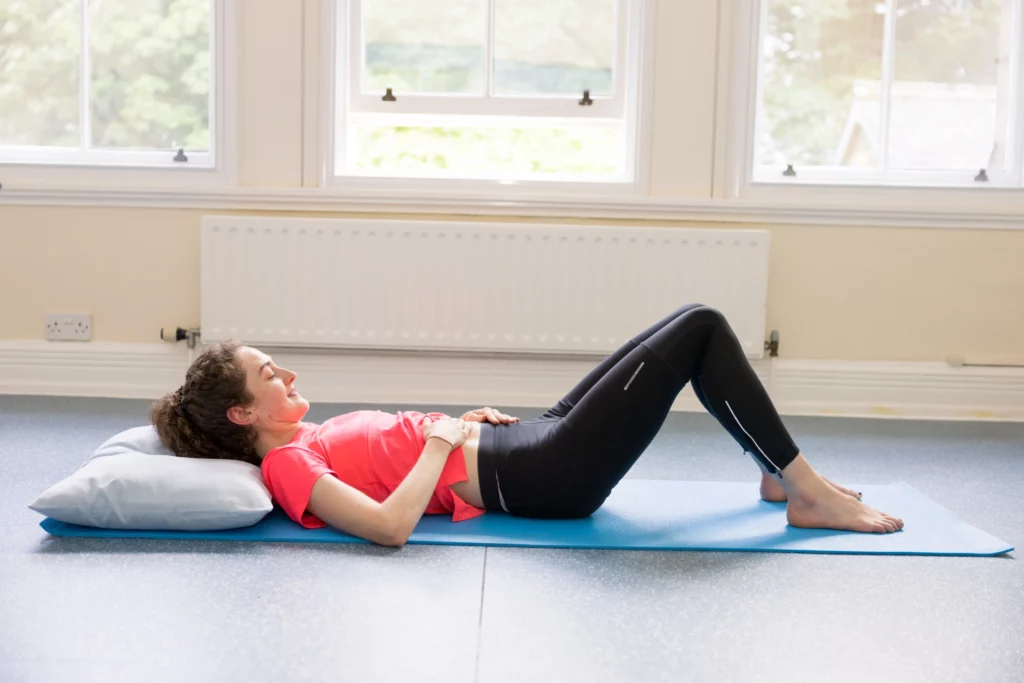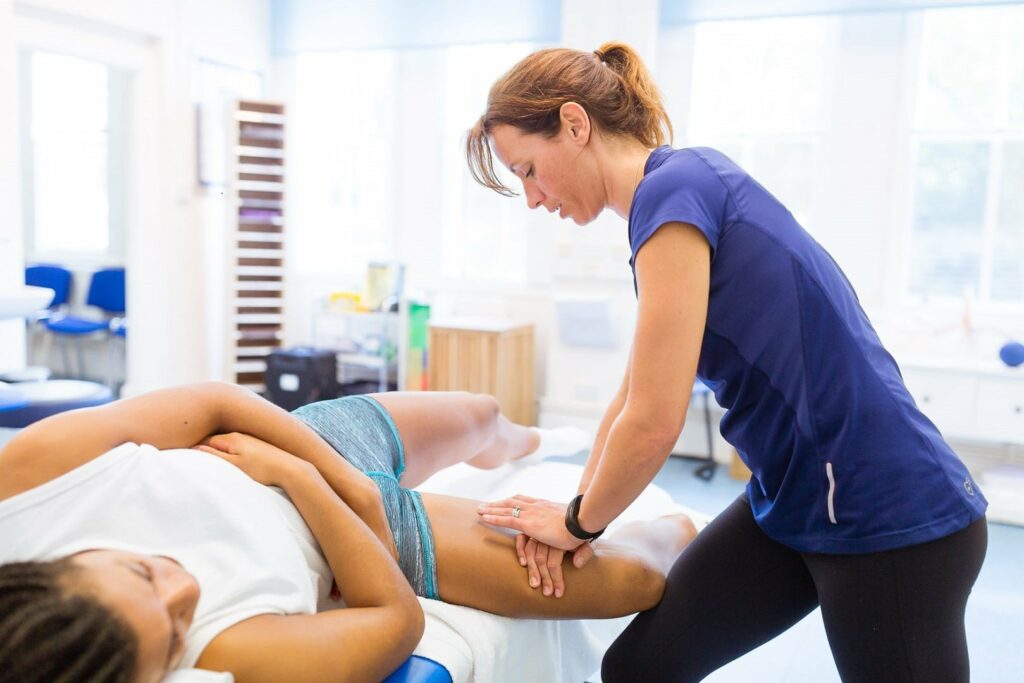Rectus diastasis / abdominal separation
Abdominal separation, or rectus diastasis, is a perfectly normal occurrence in pregnancy. All of the abdominal muscles must stretch both in length and width as the baby grows. The muscle that runs down the middle of your abdomen, from the bottom of the ribs down to the front of the pelvis, or pubic symphysis, is called the rectus abdominis (your six pack muscle!). The two halves of the rectus abdominis are joined by a fibrous structure called the linea alba. During pregnancy it is normal for the linea alba to separate to help create more space for the baby. The gap can widen by several inches and can happen earlier into the pregnancy with subsequent pregnancies, which may mean you start to show earlier.
Most women will get rectus diastasis. It is really important to do abdominal exercises in the right way to make sure that the separation of the linea alba draws together. We recommend that you see one of our experienced CSPC physiotherapists to advise you on the right exercises that you can do safely. If abdominal exercises are performed badly post pregancy, the split can widen, which can mean that the tummy muscles can end up looking domed (or still slightly pregnant). It is important to check that you are doing your exercises correctly using the following test.
Rectus Diastasis Test
There is a test called the rectus diastasis test. This is simple to do, and safe to do a week after giving birth (unless you have had a Caesarian, in which case do not do the test until at least week 8). This is to assess the distance of separation between the two sides of the abdominal muscles.
To do the test:
- Lie on the floor with the knees bent up, and feet on the floor. Your hands are by your sides.
- Then gently lift your head and shoulders just off the floor (NOT a sit up) and then feel with your fingers just above and below the belly button.
- Use your fingers to feel the edges of the split, or the sides of the rectus abdominis muscle. You should be able to measure this in terms of fingers widths. Ideally the split should be two fingers wide or less.
- If the split is wider than two fingers, then abdominal separation is still present. The function of your abdominal muscles is to draw the sides of the split together.

This test is really important as it can be used to monitor how well your tummy muscles are working when you are doing anything- whether that is an exercise, hanging out the washing or picking up your baby. It can be used to monitor progress and to make sure you don’t progress any exercise unless the abdominal split is able to draw together when you do it.
You will know if any activities and exercises are the right level if the sides of the split are able to draw together. If they don’t and get wider, you need to reset the abdominal muscles or do an easier exercise. This is really important. This also applies to other exercises- ie balance work, anything on your hands and knees and anything that works your abdominal muscles- even lunges and squats.
The test can be repeated to monitor progress, and do flag this up with a health professional if you feel the spilt isn’t drawing together after a few months. Definitely use this test as a way of monitoring how your muscles are functioning when doing exercises.
The test is really useful to guide which exercises you can do safely in the post pregnancy stage. High level athletes should follow the same rules. It may take time to be able to get back to the level of exercise and abdominal strength work that you were doing before your pregnancy, but in the long run, it is worth getting this right.
Rules to progress safely
See why patients
love CSPC Physiotherapy



